Great Lakes Tribes
Ribbonwork was highly developed among the Potawatomi, Sauk, Fox, Menominee, and Winnebago. The latter two are the major contemporary ribbonwork producing tribes in Wisconsin. Other Great Lakes groups, such as the Ojibwe and Oneida, have exhibited ribbonwork as well, but produce it less frequently than the fore listed tribes.
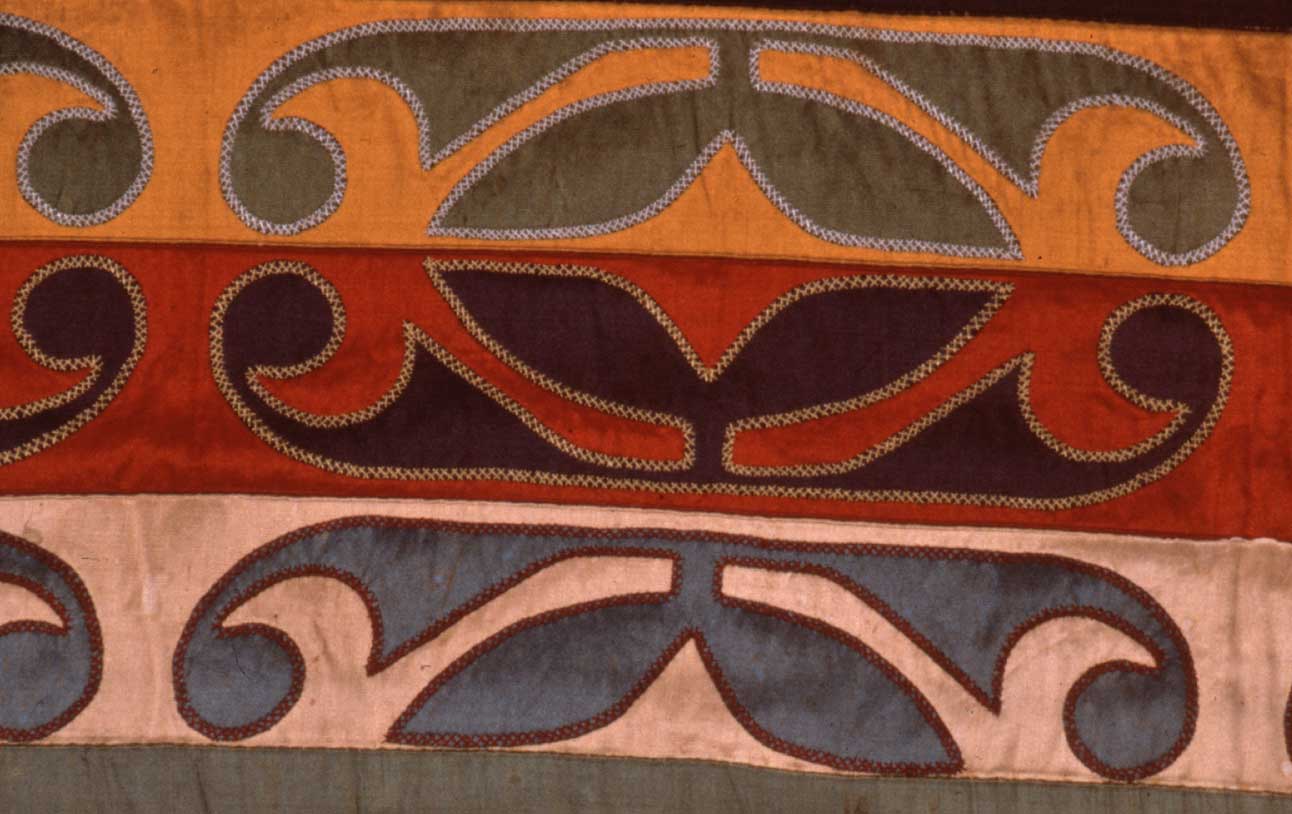 E29969/7216 Detail of Menominee Shawl |
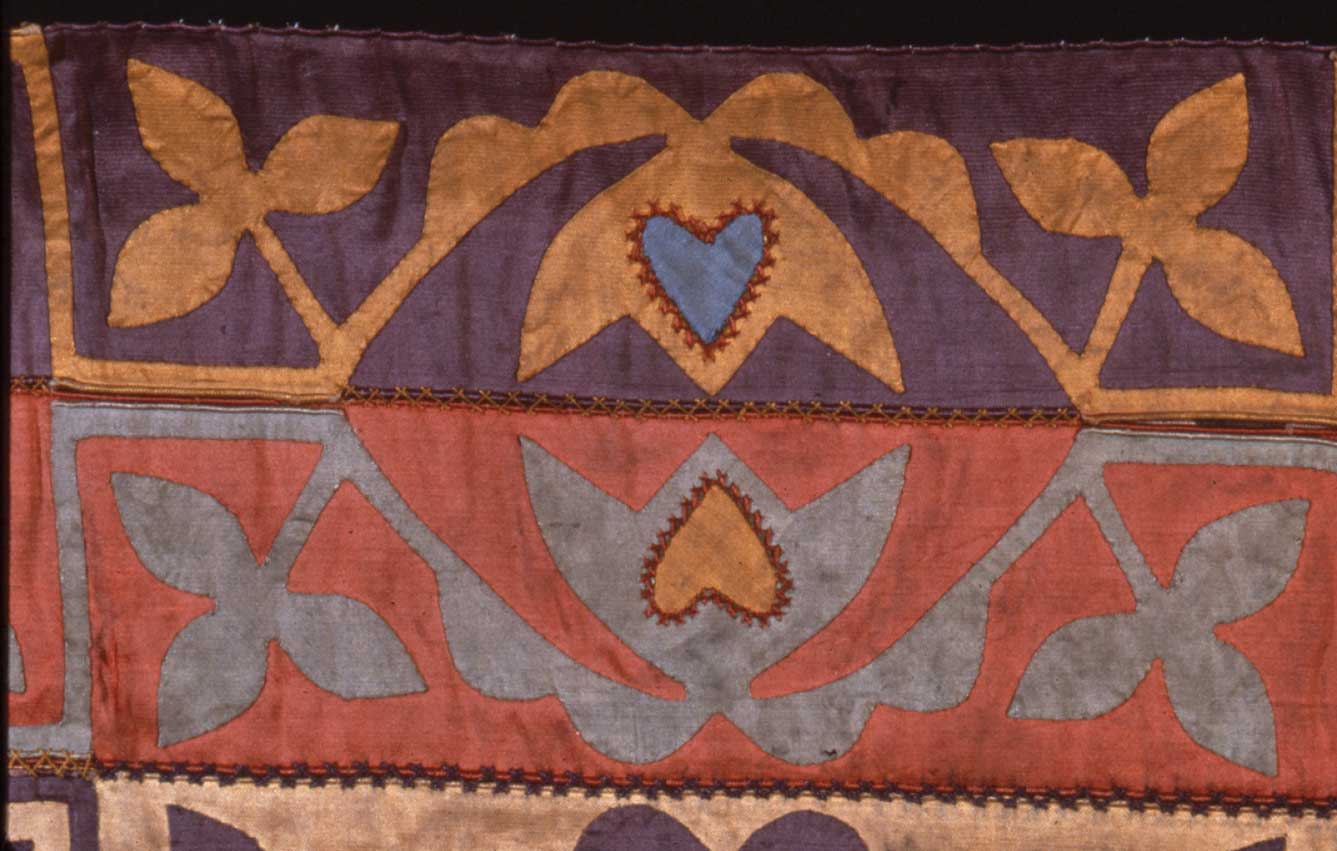 E3350/570 Detail of Winnebago Skir |
The style of ribbonwork most associated with the Great Lakes Tribes is the “positive-style” of design. To create this style, two ribbons are joined at the center and then a symmetrical design is cut from both of them, with the top ribbon creating the figure. The designs are normally floral, curved, or influenced by Victorian and natural images.
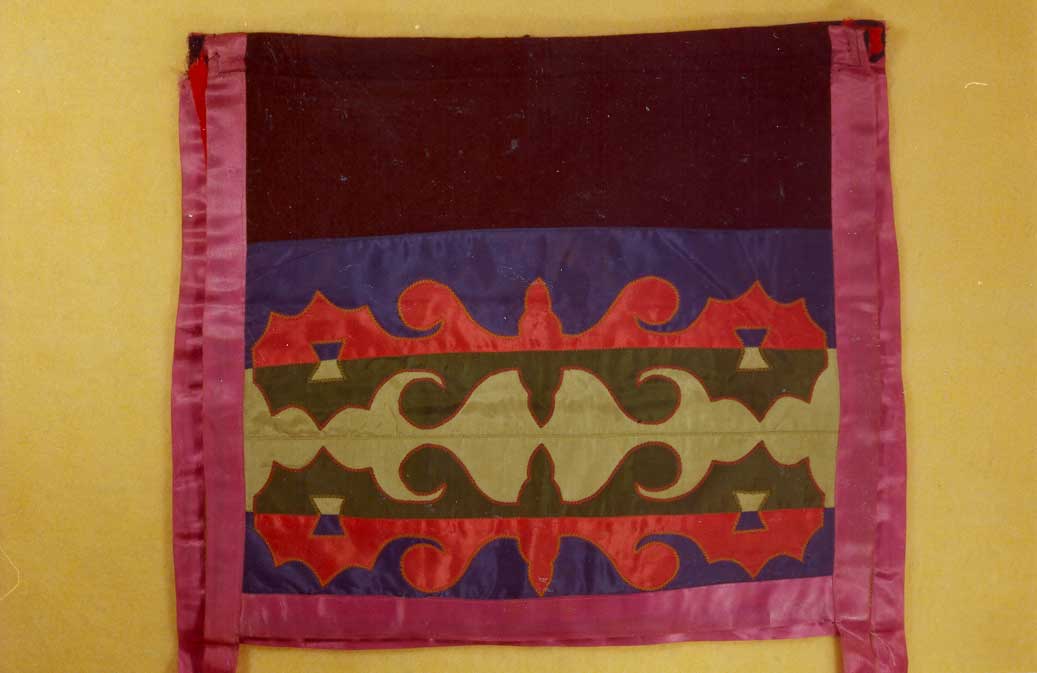 E64131/27301 Winnebago Breechcloth |
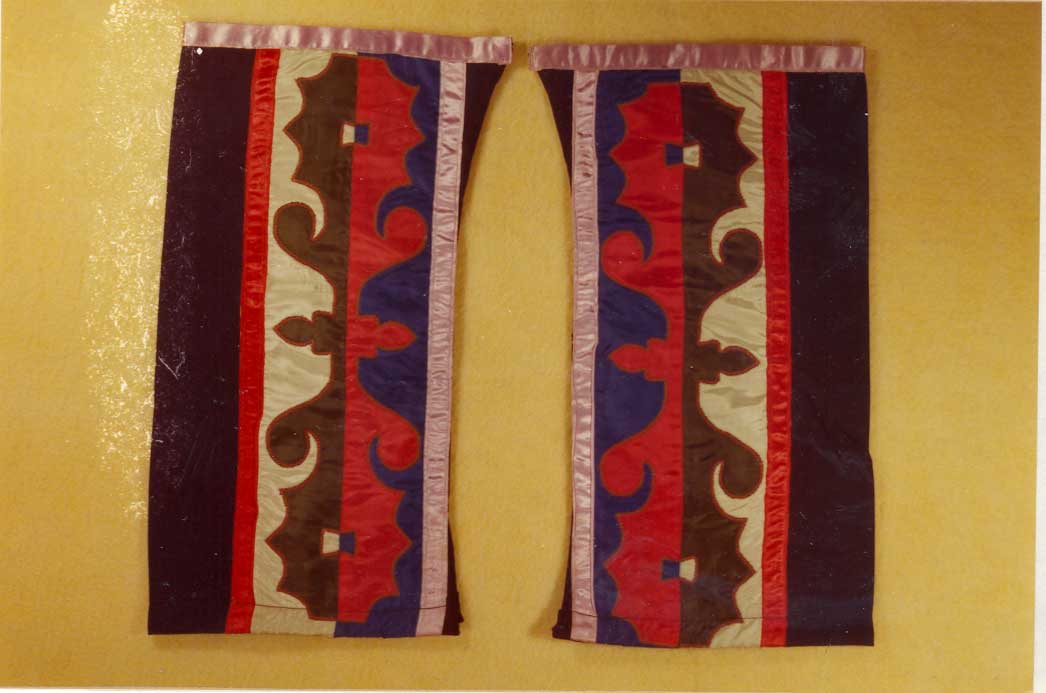 E64133/27301 Winnebago Leggings |
Plains/Prairie Tribes
The Plains and Prairie tribes began using ribbonwork techniques slightly after the tribes in the Great Lakes area, but their work quickly reached the same level of artistic quality. The tribes most commonly associated with ribbonwork in these regions are the Delaware, Kickapoo, Shawnee, Miami, Iowa, and Osage. The appliqué style has also been found to a lesser extent among the Omaha, Ponca, and Oto.
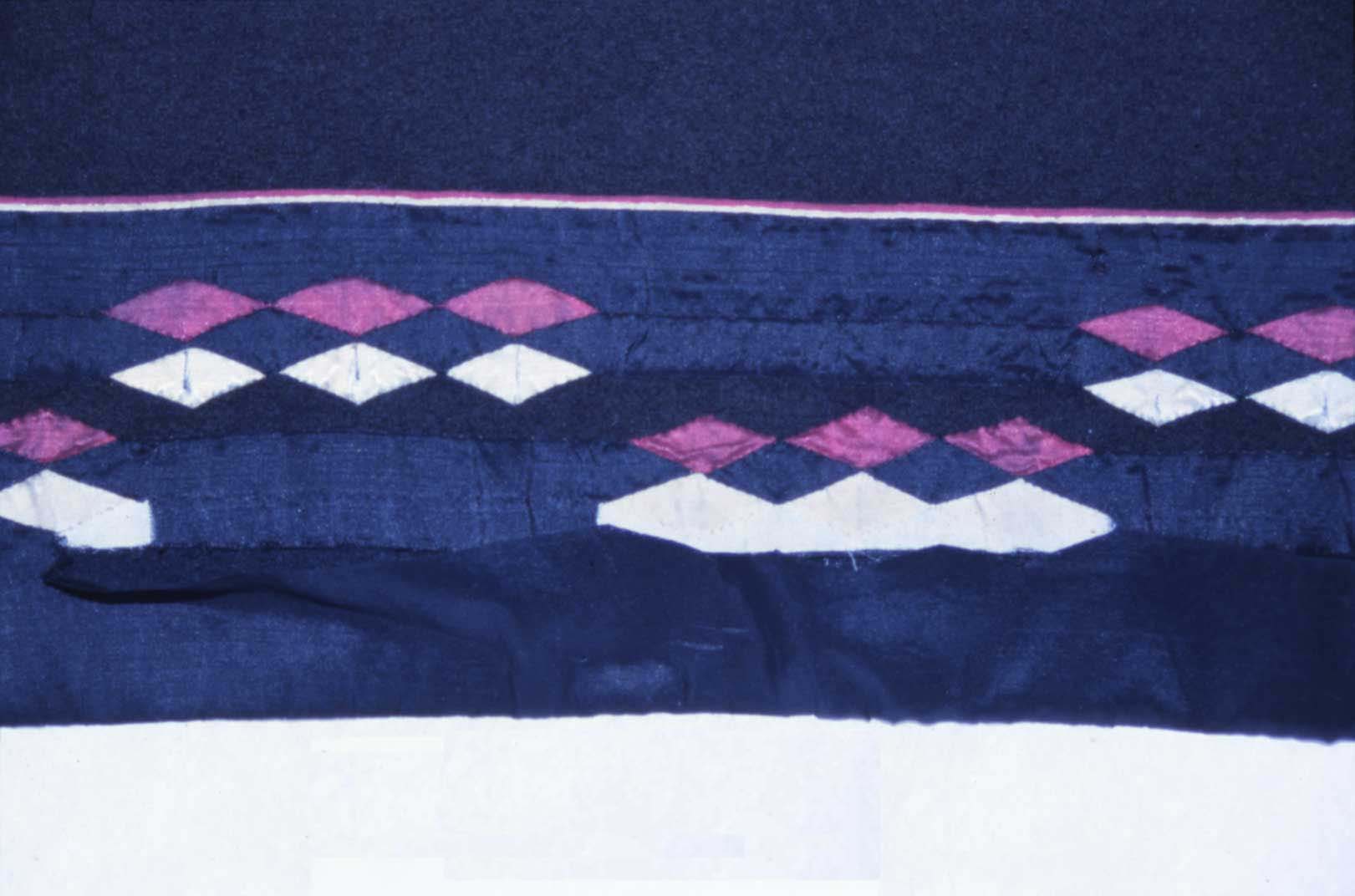 E31940/7765 Detail of Miami Shawl |
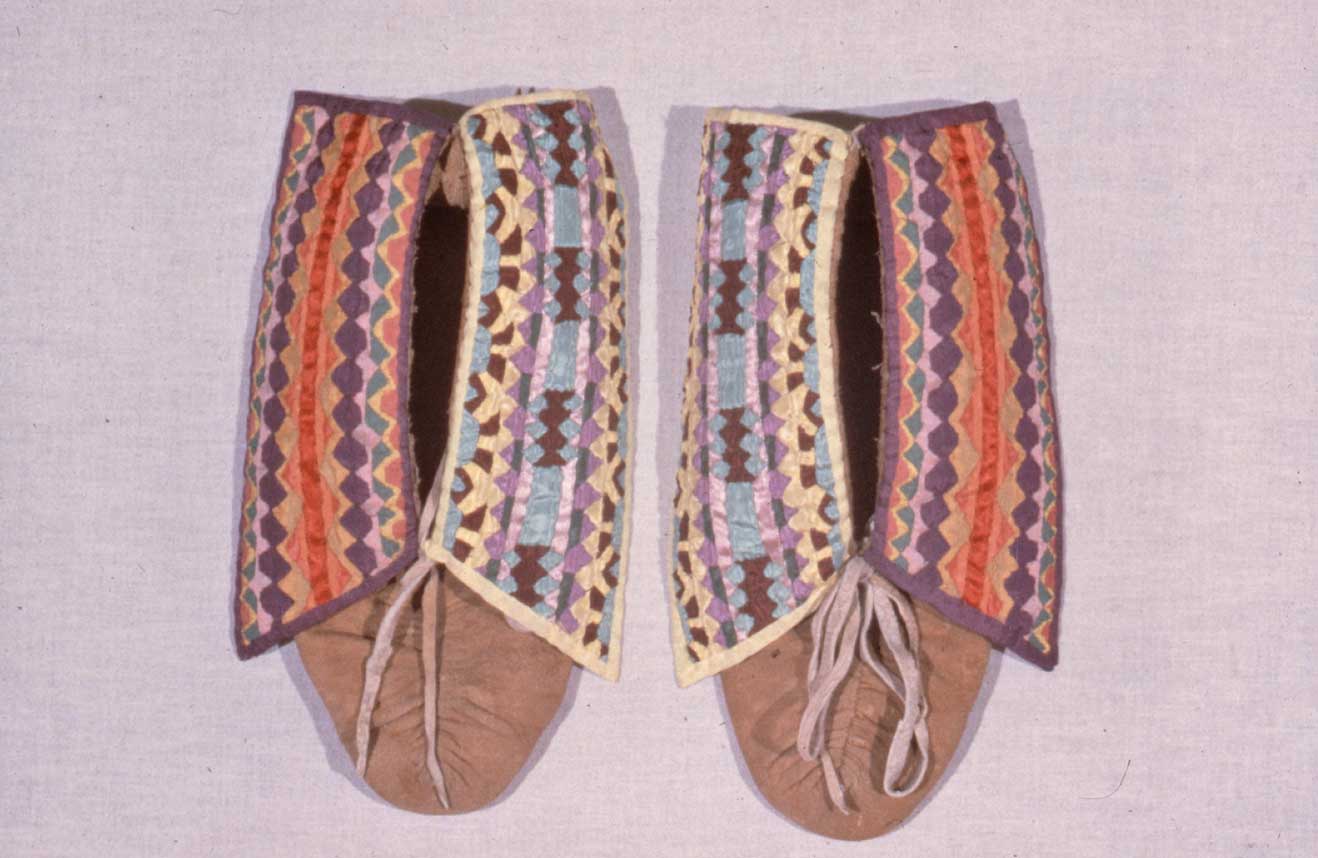 E56888ab/17990 Sauk Moccasins |
Ribbonwork produced by women in these groups often use the “shingled-style” style of geometric design. This is created by incorporating successive layers of ribbons that are cut and layered like roof shingles. Another popular design technique is the “negative-style.” These patterns are created in the same way as “positive-style” designs, except that the ribbon on the bottom exhibits the design.
The styles and designs associated with the primary ribbonwork-producing groups are by no means exclusive, and it is more often the case that individual tribes or artists incorporate many techniques and patterns in their ribbonwork. Many of the same patterns can be seen in both ribbonwork and beadwork because they share a common purpose as a decoration for clothing and other items.
Contemporary Ribbonwork
The era of contemporary ribbonwork began in the 1970s after several decades of disuse and loss of popularity. At this time several well known ribbonworkers evolved among the Osage, Delaware, Kickapoo, and Fox.
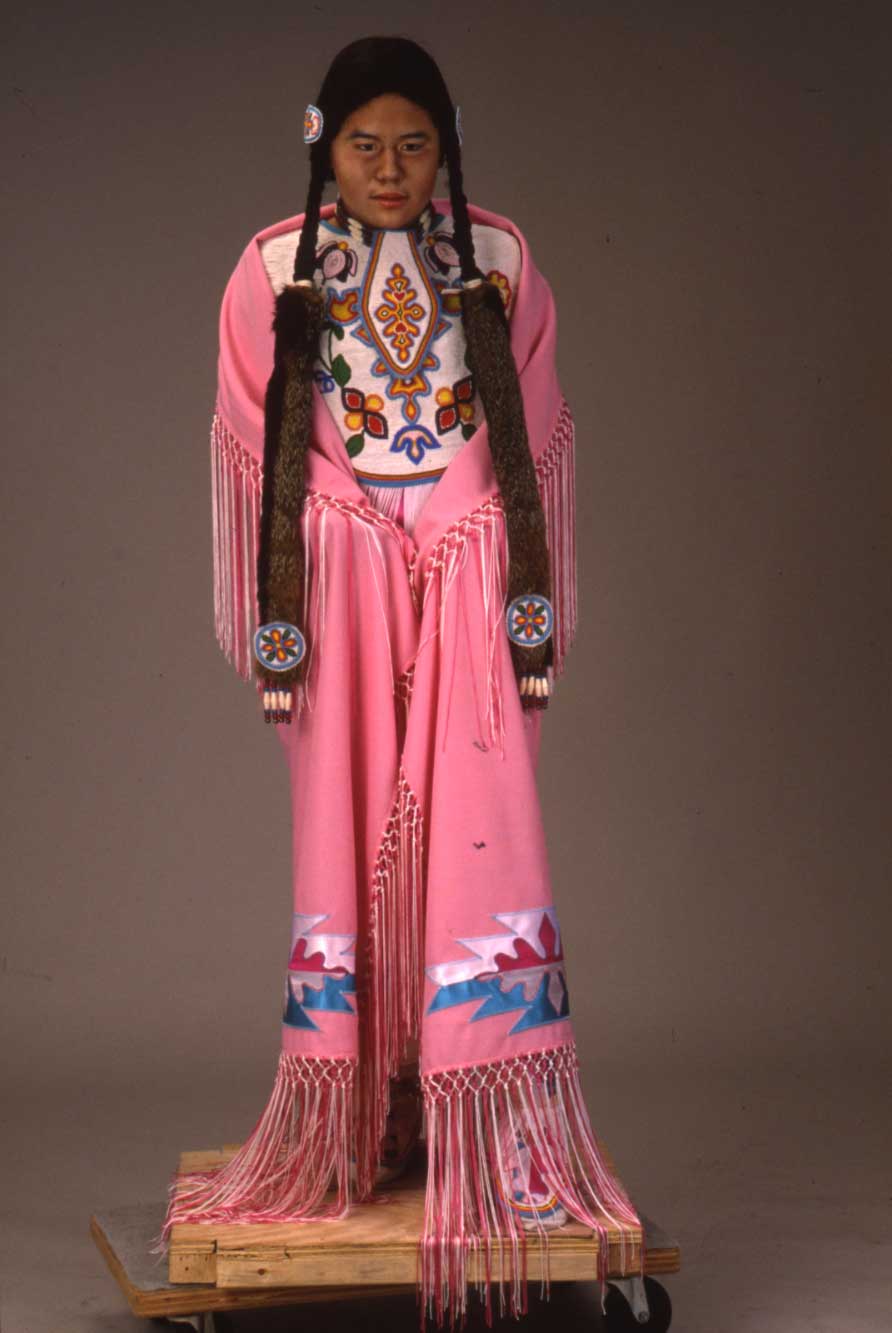
E29969/7216 Detail of Menominee Shawl
Famous Ribbonworker: Georgeann Robinson
One of the most famous contemporary ribbonworkers was Georgeann Robinson (1917-1986), a member of the Osage tribe. Robinson and two of her sisters began commercially producing ribbonwork in 1958 with the opening of their Red Man Store in Oklahoma and Georgeann continued the art form for the rest of her life. Nationally recognized for her traditional style of ribbonwork, several of her dancewear pieces are featured in museums across the country. The Milwaukee Public Museum has at least five of her pieces, including a matching legging, breechcloth, trailer set, and set of knee bands, in its collection.
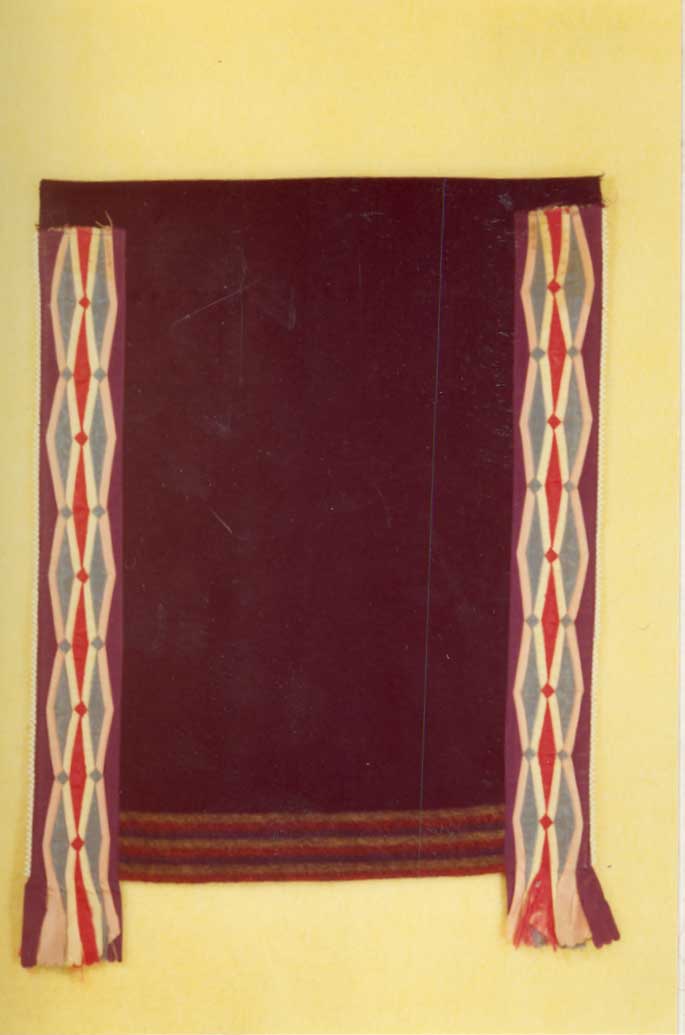 |
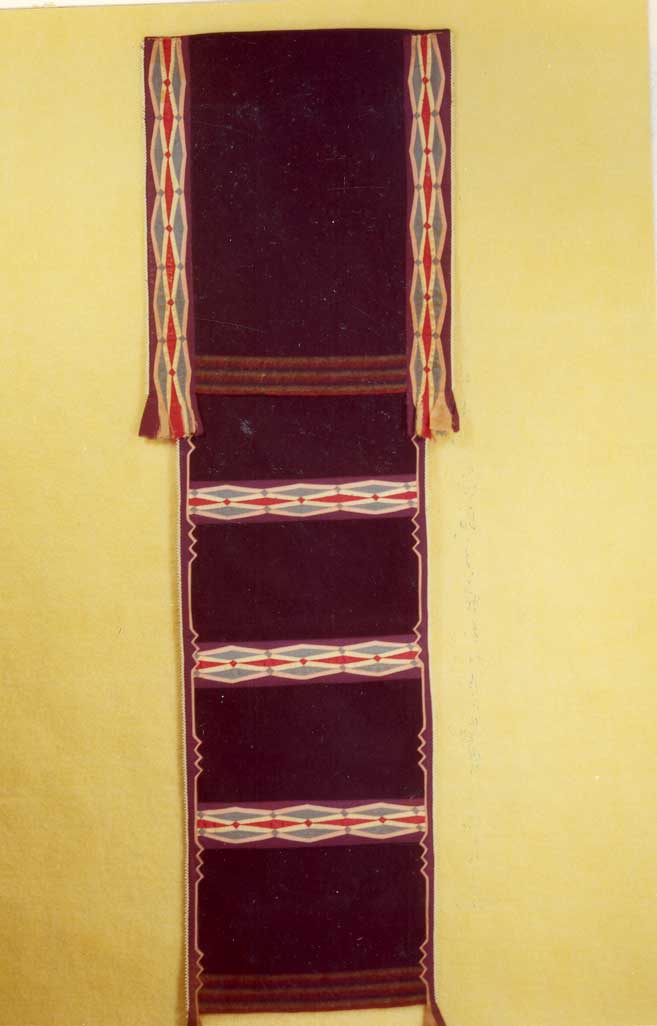 |
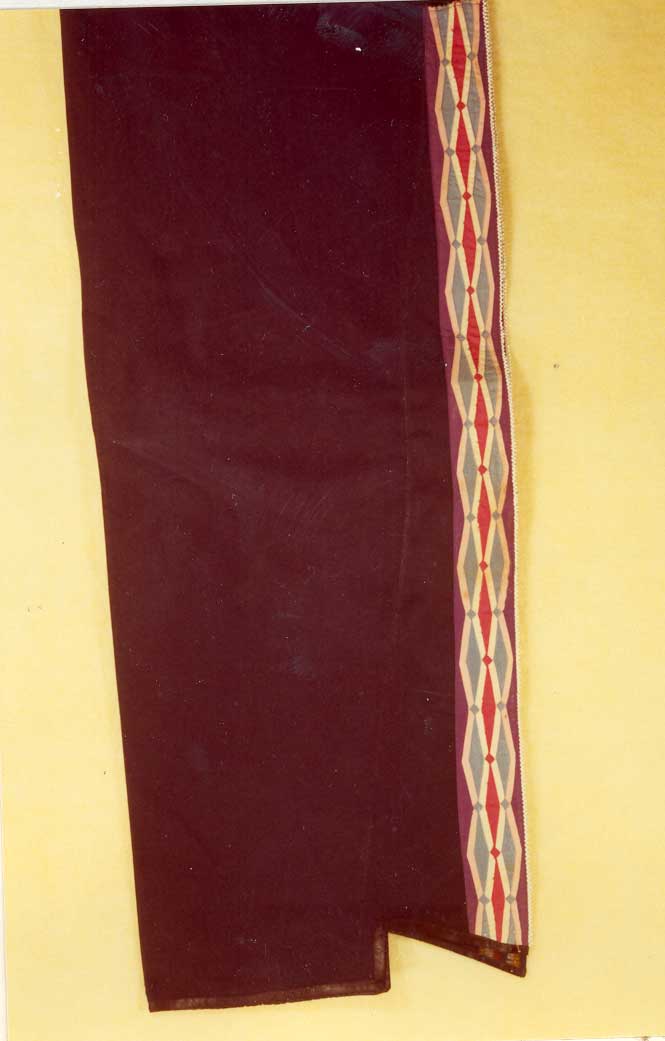 |
| E64585abc/27301 Osage Breechcloth, Trailer and Leggings Made by Georgeann Robinson |
||
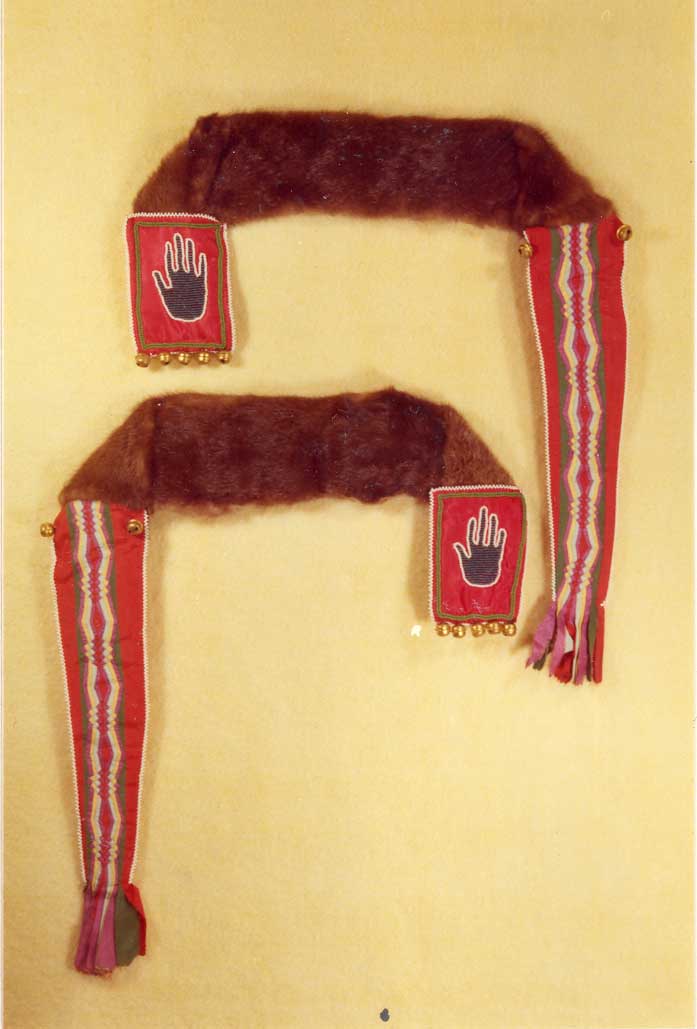 E31940/7765 Detail of Miami Shawl |
 E56888ab/17990 Sauk Moccasins |
"A Tribute to Survival" Exhibit– Milwaukee Public Museum, Second Floor
The Milwaukee Public Museum currently has several pieces of contemporary ribbonwork on display as a part of the Indian Country Powwow on the second floor of the Museum. The powwow grand entry scene features 37 life cast figures of members of Wisconsin’s seven Indian tribes: the Menominee, Winnebago (Ho-Chunk), Potawatomi, Oneida, Ojibwe, Stockbridge Munsee, and Brotherton. Representatives from these nations worked with Museum staff to create an exhibit that would convey contemporary Indian culture to the general public. In the powwow, representatives from the Winnebago, Menominee, and Chippewa display regalia decorated with ribbonwork appliqué. The ribbonwork was created by contemporary artists from those respective tribes for the exhibit.
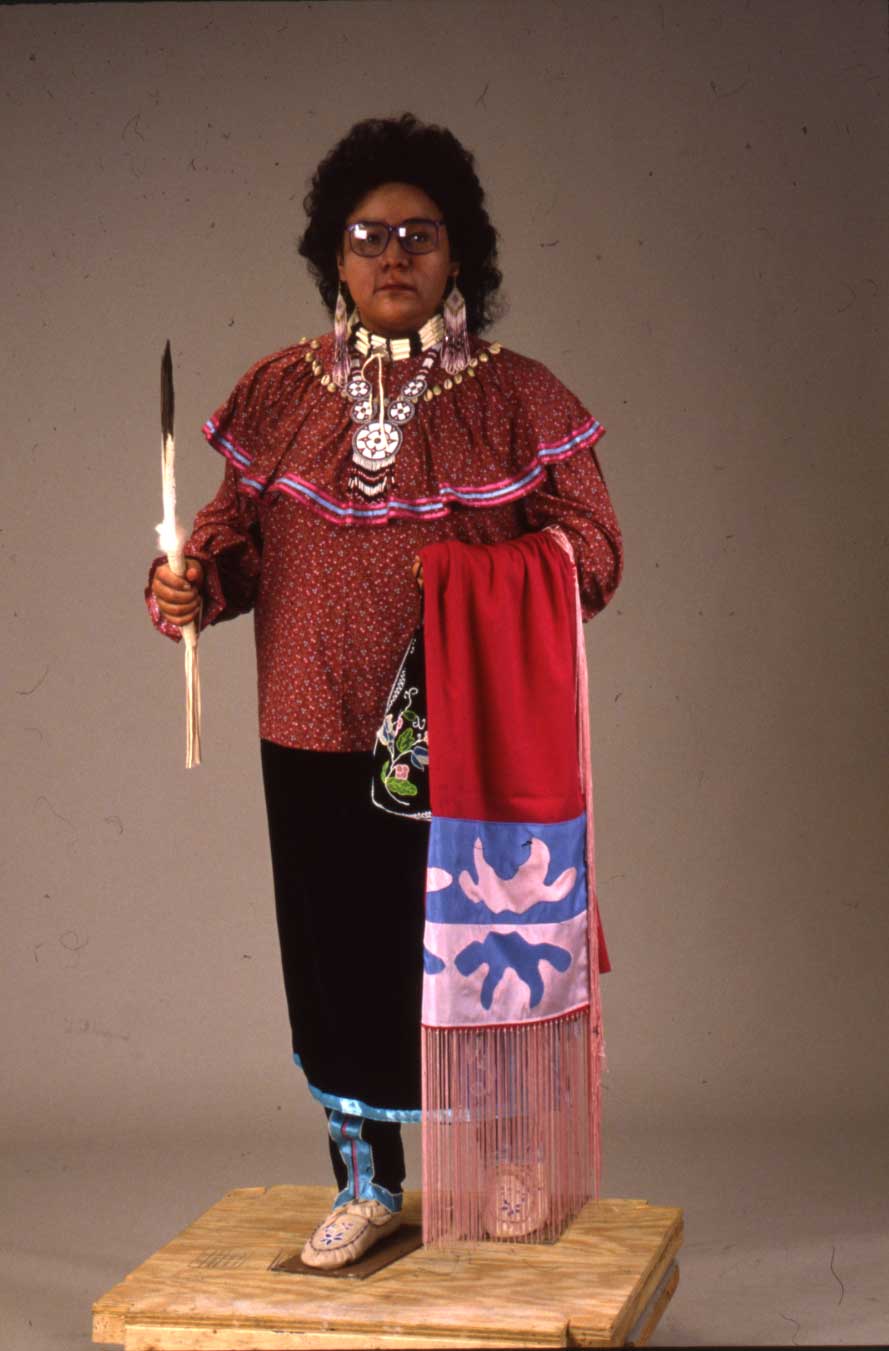 Mary Notinokey (Menominee), "A Tribute to Survival" Exhibit |
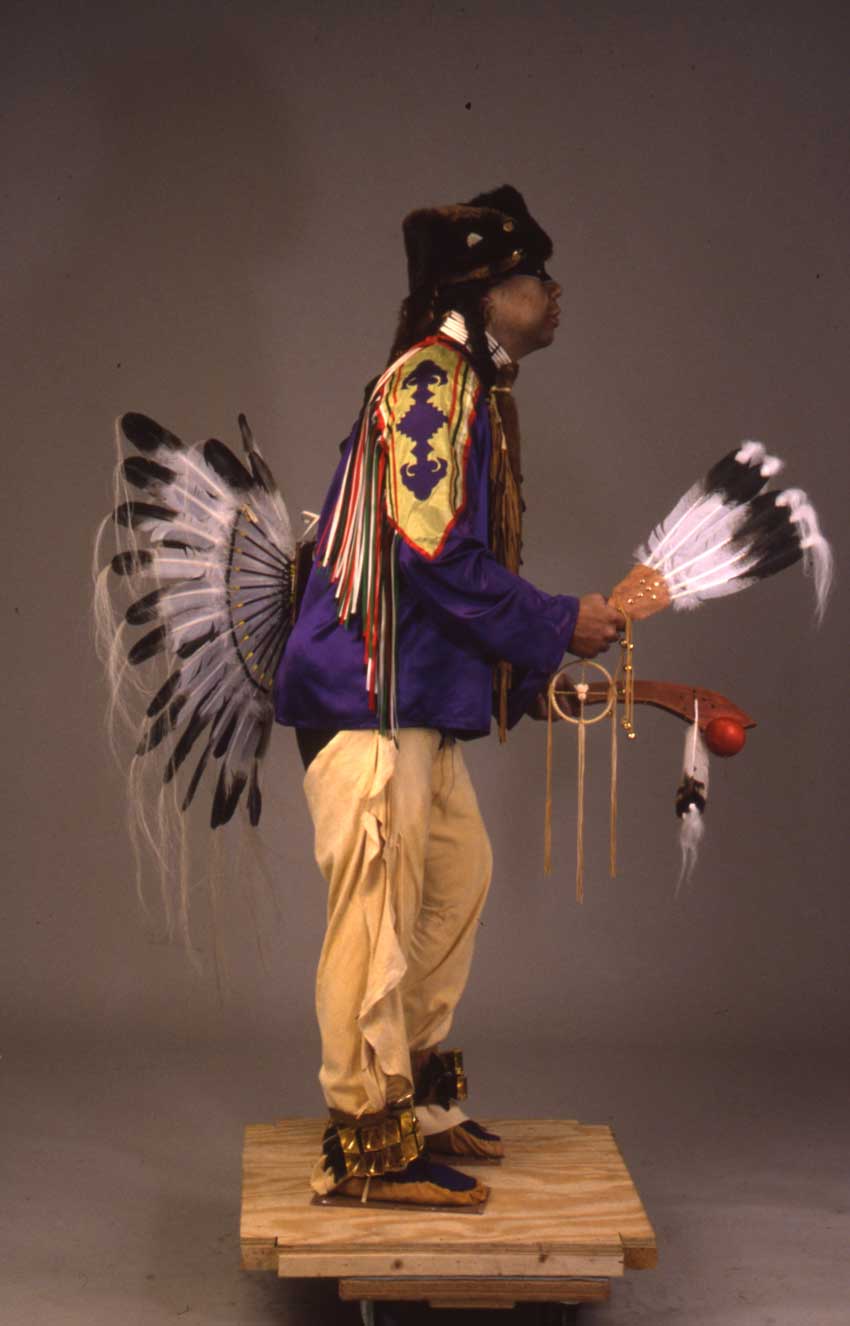 Mark Denning (Oneida/Menominee), "A Tribute to Survival" Exhibit |
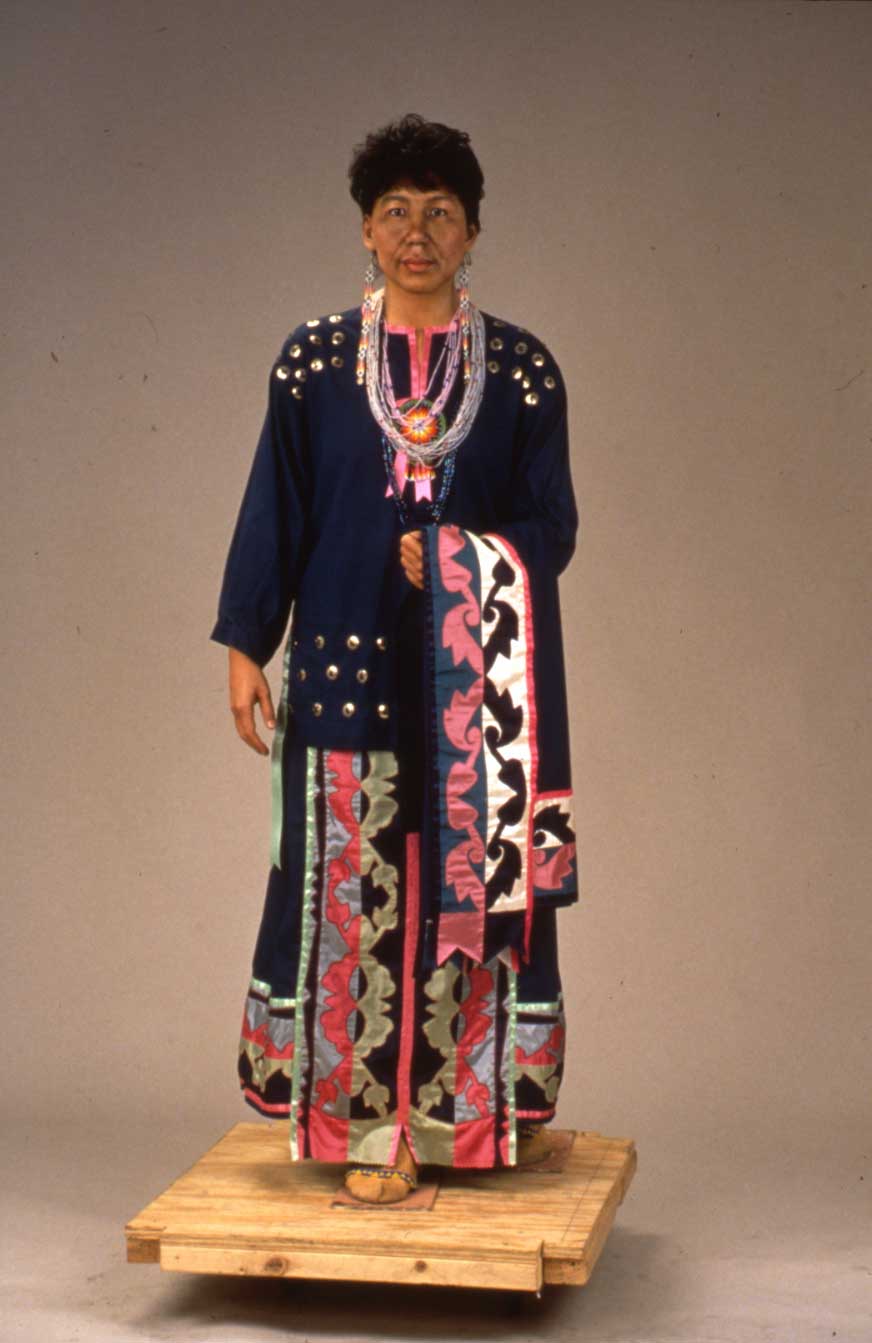 Thundercloud (Winnebago), “A Tribute to Survival” Exhibit |
 Carole Lesczynski (Ojibwe) "A Tribute to Survival" Exhibit |

